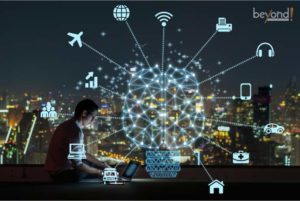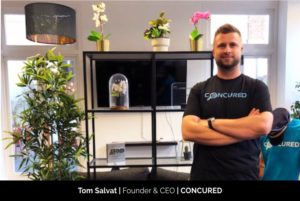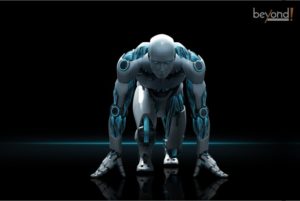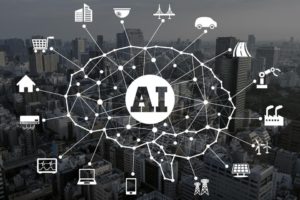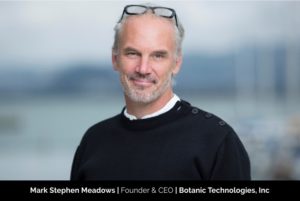The Five Senses of Robotics
The 10 Most Promising Artificial Intelligence Businesses in 2020

Healthy humans take for granted their five senses. In order
to mold metal into perceiving machines, it requires a significant amount of
engineers and capital. Already, we have handed over many of our faculties to
embedded devices in our cars, homes, workplaces, hospitals, and governments.
Even automation skeptics unwillingly trust the smart gadgets in their pockets
with their lives.
Last week, General Motors stepped up its autonomous car
effort by augmenting its artificial intelligence unit, Cruise Automation, with
greater perception capabilities through the acquisition of LIDAR (Light
Imaging, Detection, And Ranging) technology company Strobe. Cruise was
purchased with great fanfare last year by GM for a billion dollars. Strobe’s
unique value proposition is shrinking its optical arrays to the size of
microchip, thereby substantially reducing costs of a traditionally expensive
sensor that is critical for autonomous vehicles measuring the distances of
objects on the road. Cruise CEO Kyle Vogt wrote last week on Medium that
“Strobe’s new chip-scale LIDAR technology will significantly enhance the
capabilities of our self-driving cars. But perhaps more importantly, by
collapsing the entire sensor down to a single chip, we’ll reduce the cost of
each LIDAR on our self-driving cars by 99%.”
GM is not the first Detroit automaker aiming to reduce the
costs of sensors on the road; last year Ford invested $150 million in Velodyne,
the leading LIDAR company on the market. Velodyne is best known for its
rotation sensor that is often mistaken for a siren on top of the car. In
describing the transaction, Raj Nair, Ford’s Executive Vice President, Product
Development and Chief Technical Officer, said “From the very beginning of our
autonomous vehicle program, we saw LIDAR as a key enabler due to its sensing
capabilities and how it complements radar and cameras. Ford has a long-standing
relationship with Velodyne and our investment is a clear sign of our commitment
to making autonomous vehicles available for consumers around the world.” As the
race heats up for competing perception technologies, LIDAR startups is already
a crowded field with eight other companies (below) competing to become the
standard vision for autonomous driving.
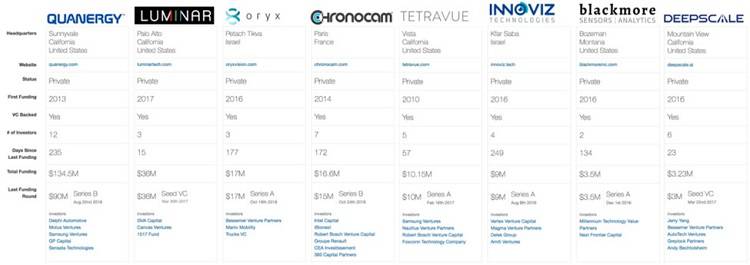
Walking the halls of Columbia University’s engineering
school last week, I visited a number of the robotic labs working on the next
generation of sensing technology. Dr. Peter Allen, Professor of Computer
Science, is the founder of the Columbia Grasp Database, whimsically called
GraspIt!, that enables robots to better recognize and pickup everyday objects.
GraspIt! provides “an architecture to enable robotic grasp planning via shape
completion.” The open source GraspIt! database has over 440,000 3D representations
of household articles from varying viewpoints, which makes up its “3D
convolutional neural network (CNN).” According to the Lab’s IEEE paper
published earlier this year, the CNN is able to serve up “a 2.5D pointcloud”
capture of “a single point of view” of each item, which then “fills in the
occluded regions of the scene, allowing grasps to be planned and executed on
the completed object” (see diagram below). As Dr. Allen demonstrated last week,
the CNN is able to perform as successfully in live scenarios with a robots
“seeing” an object for the first time, as it does in computer simulations.
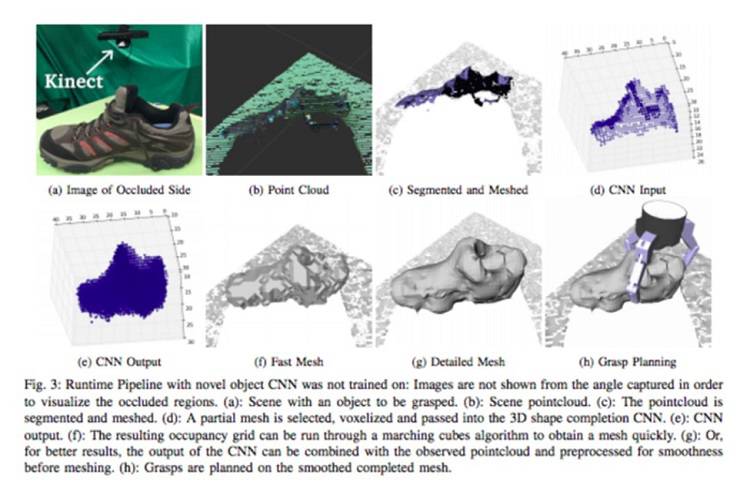
Taking a novel approach in utilizing their cloud-based data
platform, Allen’s team now aims to help quadriplegics better navigate their
world with assistive robots. Typically, a quadriplegic is reliant on human aids
to perform even the most basic functions like eating and drinking, however
Brain-Computer Interfaces (BCI) offer the promise of independence with a robot.
Wearing a BCI helmet, Dr. Allen’s grad student was able to move a robot around
the room by just looking at objects on screen. The object on the screen
triggers electroencephalogram (EGG) waves that are admitted to the robot which
translates the signals into pointcloud images on the database. According to
their research, “Noninvasive BCI’s, which are very desirable from a medical and
therapeutic perspective, are only able to deliver noisy, low-bandwidth signals,
making their use in complex tasks difficult. To this end, we present a shared
control online grasp planning framework using an advanced EEG-based
interface…This online planning framework allows the user to direct the planner
towards grasps that reflect their intent for using the grasped object by
successively selecting grasps that approach the desired approach direction of
the hand. The planner divides the grasping task into phases, and generates
images that reflect the choices that the planner can make at each phase. The
EEG interface is used to recognize the user’s preference among a set of options
presented by the planner.”
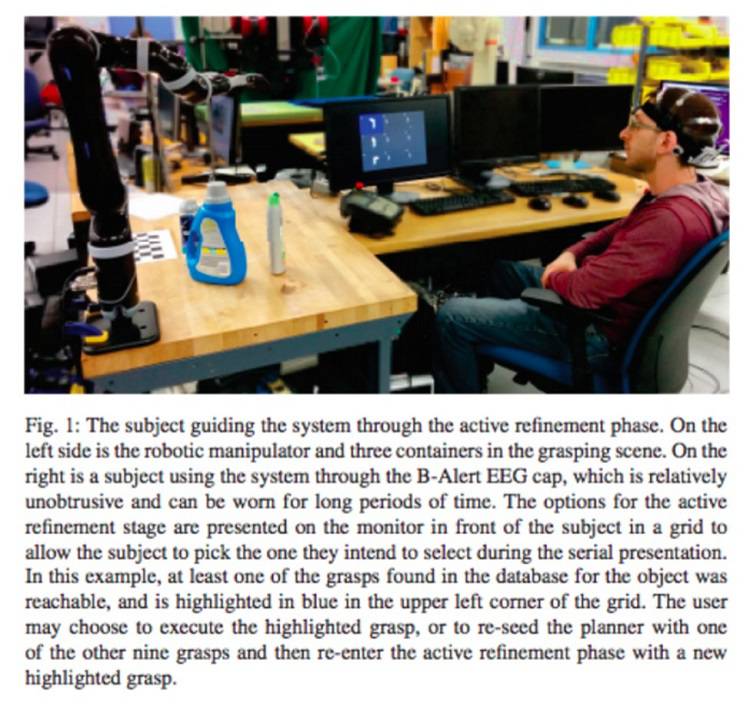
While technologies like LIDAR and GraspIt! enable robots to
better perceive the human world, in the basement of the SEAS Engineering
Building at Columbia University, Dr. Matei Ciocarlie is developing an array of
affordable tactile sensors for machines to touch & feel their environments.
Humans have very complex multi-modal systems that are built through trial &
error knowledge gained since birth. Dr. Ciocarlie ultimately aims to build a
robotic gripper that has the capability of a human hand. Using light signals,
Dr. Ciocarlie has demonstrated “sub-millimeter contact localization accuracy”
of the mass object to determine the force applied to picking it up. At
Columbia’s Robotic Manipulation and Mobility Lab (ROAM), Ciocarlie is tackling
“one of the key challenges in robotic manipulation” by figuring out how “you
reduce the complexity of the problem without losing versatility.” While
demonstrating a variety of new grippers and force sensors which are being
deployed in such hostile environments as the International Space Station and a
human’s cluttered home, the most immediately promising innovation is
Ciocarlie’s therapeutic robotic hand.
According to Ciocarlie’s paper: “Fully wearable hand
rehabilitation and assistive devices could extend training and improve quality
of life for patients affected by hand impairments. However, such devices must
deliver meaningful manipulation capabilities in a small and lightweight
package… In experiments with stroke survivors, we measured the force levels
needed to overcome various levels of spasticity and open the hand for grasping
using the first of these configurations, and qualitatively demonstrated the
ability to execute fingertip grasps using the second. Our results support the
feasibility of developing future wearable devices able to assist a range of
manipulation tasks.”
Across the ocean, Dr. Hossam Haick of Technion-Israel
Institute of Technology has built an intelligent olfactory system that can
diagnosis cancer. Dr. Haick explains, “My college roommate had leukemia, and it
made me want to see whether a sensor could be used for treatment. But then I
realized early diagnosis could be as important as treatment itself.” Using an
array of sensors composed of “gold nanoparticles or carbon nanotube” patients
breath into a tube that detects cancer biomarkers through smell. “We send all
the signals to a computer, and it will translate the odor into a signature that
connects it to the disease we exposed to it,” says Dr. Haick. Last December,
Haick’s AI reported an 86% accuracy in predicting cancers in more than 1,400
subjects in 17 countries. The accuracy increased with use of its neural network
in specific disease cases. Haick’s machine could one day have better olfactory
senses than canines, which have been proven to be able sniff out cancer.
When writing this post on robotic senses, I had several
conversations with Alexa and I am always impressed with her auditory processing
skills. It seems that the only area in which humans will exceed robots will be
taste; however I am reminded of Dr. Hod Lipson’s food printer. As I watched
Lipson’s concept video of the machine squirting, layering, pasting and even
cooking something that resembled Willie Wonka’s “Everlasting Gobstopper,” I sat
back in his Creative Machines Lab realizing that Sci-Fi is no longer fiction.






